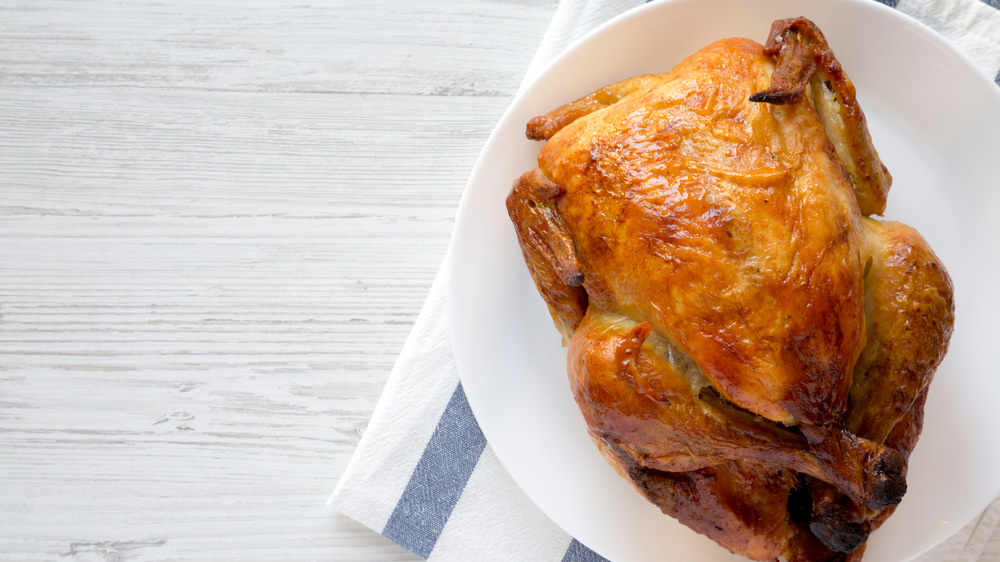Here's How Healthy Rotisserie Chicken Really Is
You've probably grabbed a rotisserie chicken from your local grocery store for a quick, affordable dinner option instead of hitting the drive-thru. But is a delicious oven-roasted rotisserie chicken really as healthy as it's assumed to be?
There's no denying that rotisserie chicken is a better option than its fried counterpart. Not only is chicken high in protein, it contains iron, calcium, and vitamin A (via Women's Health). Additional nutrients include niacin, selenium, riboflavin, vitamin B12, phosphorus, and zinc, according to Healthline.
The nutritional benefits of rotisserie chicken are best understood by separating the benefits into white meat, dark meat, and with or without skin options. This is one of the biggest perks rotisserie chicken provides — the option to customize your choice in meat with your specific dietary desires.
Dark meat options like chicken thighs contain the highest amount of calories and fat, while choosing a lean white meat like the chicken breast with no skin is a low-calorie, high-protein option, according to Healthline.
The unhealthy side of rotisserie chicken
Unfortunately, there are some downfalls to rotisserie chicken, too. You typically can't control the seasonings the chicken is prepared with, so there may be some unwanted additives in your chicken like phosphates, as well as high sodium levels, according to Women's Health.
Phosphates can be particularly concerning to those with chronic kidney issues, however, most rotisserie chicken options do not contain large amounts of these additives (via Healthline). If you are concerned, it is best to avoid eating the skin. Most grocery stores have "naked" options that are skinless or prepared unseasoned.
You may also want to avoid the chicken skin if you are trying to steer clear of high amounts of saturated fat, which can raise your LDL cholesterol levels. However, the skin is perfectly fine to enjoy in moderation.
Overall, rotisserie chicken is a healthy option for a quick meal on its own or to dress up your recipes. You can make an educated decision about whether or not this meal option fits your nutrition plan by reading the labels at your store and selecting the healthiest, least processed option available.


